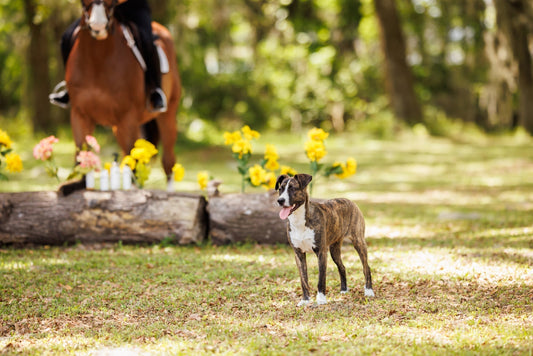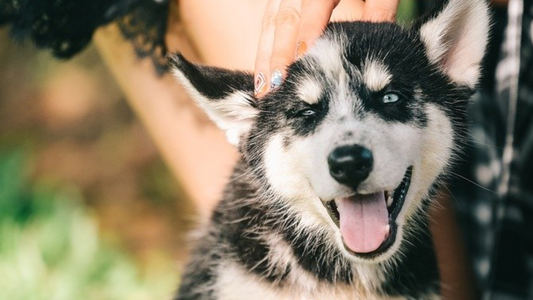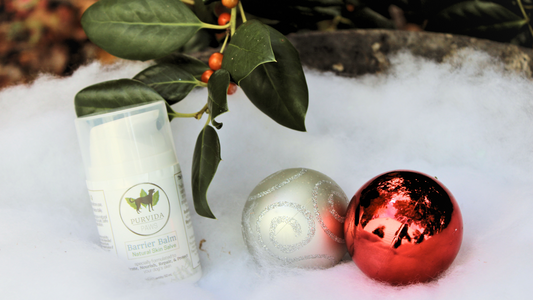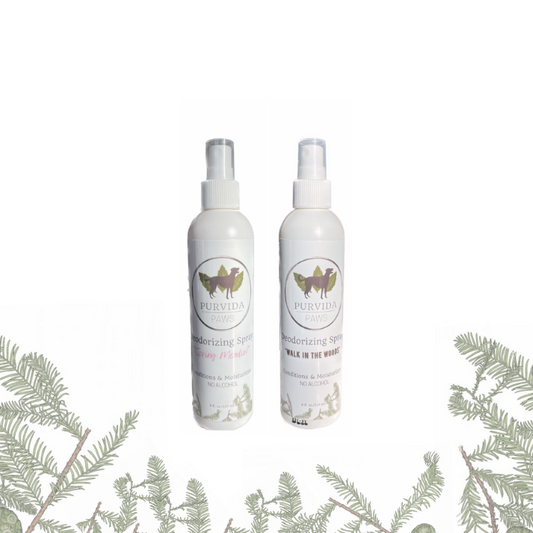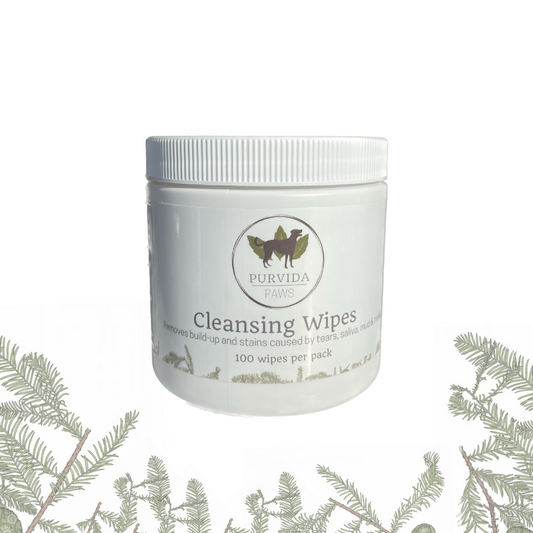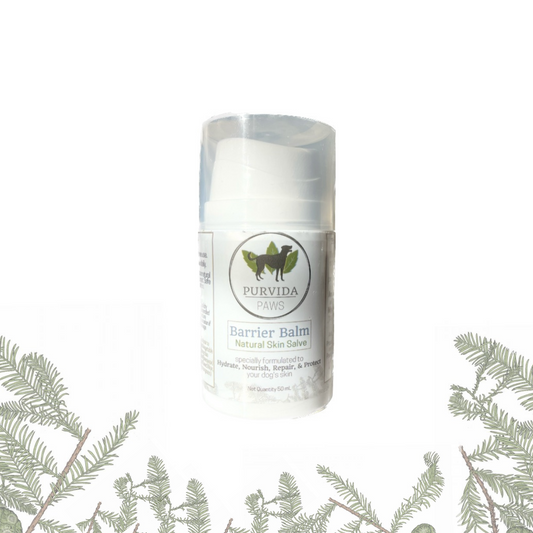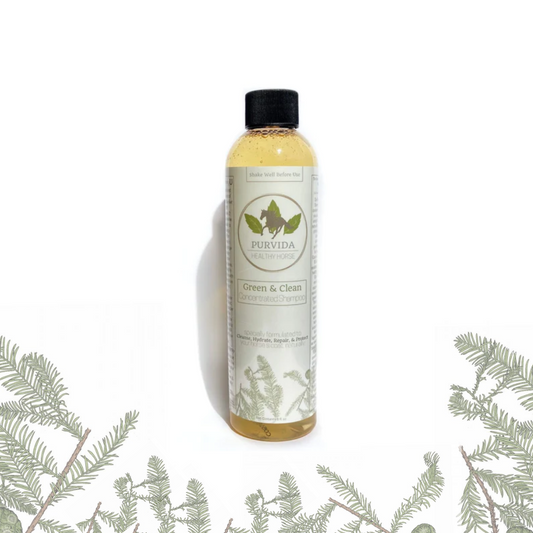During the winter months, dogs' paw pads undergo specific changes due to the cold and often harsh weather conditions. These changes can pose challenges for dog owners who need to navigate the delicate balance between ensuring their pets get enough exercise and protecting their paw pads from the elements. Understanding these winter-related challenges and implementing preventative measures is crucial for maintaining the health and well-being of dogs during this season.

How Winter Impacts your Dogs Paws:
-
Cold and Dry Conditions:
One of the primary challenges dogs face during winter is exposure to cold temperatures and dry air. The combination of these factors can lead to the drying out of paw pads, causing them to become brittle and prone to cracking. Dry paw pads are not only uncomfortable for the dog but also more susceptible to injuries and irritations.
-
Snow and Ice Accumulation:
Snow and ice present unique challenges to dogs' paw pads. When dogs walk on snow-covered or icy surfaces, the snow can accumulate between their toes and around the paw pads. This accumulation can lead to the formation of ice balls, causing discomfort and altering the natural gait of the dog. In extreme cases, this can even lead to frostbite.
-
Salt and Deicers:
Many municipalities use salt and chemical deicers to melt snow and ice on sidewalks and roads. While these substances are effective in preventing slips, they can be harsh on dogs' paw pads. The salt crystals can cause irritation and chemical burns, leading to discomfort and potential long-term damage if not addressed promptly.
Winter conditions can make it challenging for dog owners to detect paw pad problems. The presence of snow and ice can hide issues such as cuts, cracks, or irritation. This makes it crucial for owners to be proactive in inspecting their dogs' paw pads regularly.
Dry and cold conditions can decrease the natural resilience of dogs' paw pads. This makes them more susceptible to injuries, including cuts and cracks, which can lead to pain, lameness, and difficulty walking. If your dog is experiencing paw pad discomfort, you might also notice some behavioral changes. They might become reluctant to go for walks, show signs of pain or irritation, or even develop anxiety about going outside. But don’t worry, here are 8 preventative measures you can take to keep your dog’s paw pads healthy all winter long
7 Preventative Measures for Winter Paw Pad Care:
-
Regular Paw Inspections:
Make a habit of regularly inspecting your dogs' paw pads, looking for any signs of cuts, cracks, or irritation. Early detection allows for prompt intervention and prevents minor issues from escalating.

-
Moisturizing Paw Balms:
Applying paw balms or moisturizers specifically designed for dogs helps combat dryness and maintain the natural oils in the paw pads. Regular moisturizing can contribute to the overall health and resilience of the paw pads. Our new Barrier Balm-Natural Skin Salve is the perfect solution for winter paw pads, not only does it moisturize and hydrate, but its also naturally antimicrobial, helping to keep your dogs paw pads clean, healthy, and free from irritation during the harsh winter months.
-
Paw Hair Trimming:
Trimming the hair around the paw pads helps prevent the accumulation of snow and ice. This not only promotes better paw pad health but also reduces the discomfort associated with snowball formation.
-
Protective Dog Booties:
Consider using dog booties to provide a physical barrier between the paw pads and the cold ground. Booties can also protect against salt and deicers, minimizing the risk of irritation and chemical burns. Some dogs aren’t the biggest fans of booties, so if you find you have a dog that absolutely will not tolerate them, you can also use our barrier balm to create a protective barrier on their paw pads using the power of beeswax!
-
Wiping After Walks:
After walks in wintry conditions, wipe your dog's paws with our natural cleansing wipes or a damp cloth to remove any salt, deicers, or ice balls. Thorough drying is essential to prevent prolonged exposure to moisture, which can contribute to paw pad issues.
-
Choose Pet-Friendly Routes:
Opt for walking routes that are less likely to be treated with salt or deicers. This minimizes exposure to harsh chemicals and reduces the risk of paw pad irritation.
-
Balanced Nutrition:
A well-balanced diet rich in essential nutrients, including omega-3 fatty acids, supports overall skin and paw pad health. Consult with a veterinarian to ensure your dog's diet meets their specific needs.
 BONUS TIP: Always consultation with your Veterinarian if you notice persistent issues or changes in your dog's behavior related to their paw pads. Professional guidance can help identify underlying problems and tailor a care plan to your dog's individual needs.
BONUS TIP: Always consultation with your Veterinarian if you notice persistent issues or changes in your dog's behavior related to their paw pads. Professional guidance can help identify underlying problems and tailor a care plan to your dog's individual needs.
At the end of the day, winter paw pad care for dogs requires a holistic approach that addresses the specific challenges posed by cold temperatures, snow, ice, and chemical deicers. By incorporating regular inspections, preventative measures, and attentive care, dog owners can ensure their furry companions enjoy a comfortable and healthy winter season. Proactive winter paw pad care not only prevents immediate discomfort but also contributes to the long-term well-being of dogs, allowing them to continue enjoying outdoor activities throughout the colder months.



